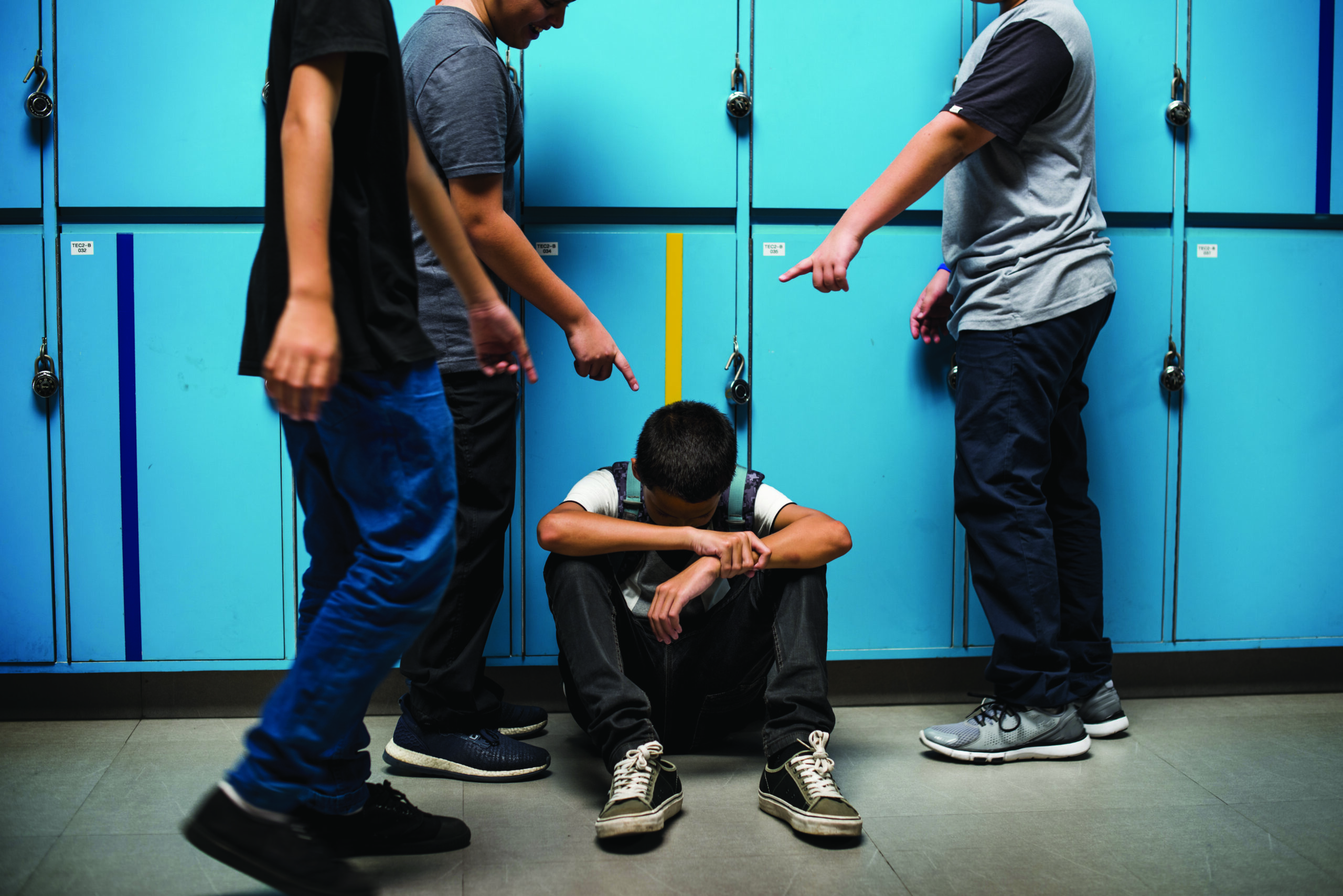
What to Do if Your Child Is a Bully
By Alex Moore
Bullying is a common occurrence in schools regardless of age. And while bullying often happens at school, youth are vulnerable to bullies anywhere. Cyberbullying is on the rise. Pew Research Center data shows that about 6 in 10 teens have been bullied or harassed .
“Bullying is not normal, natural or necessary,” said Barbara Coloroso, speaker and author of The Bully, the Bullied, and the Not-So-Innocent Bystander. “You have to learn to be mean to someone else.”
But if it’s a learned behavior, she believes it can also be unlearned. And parents who discover that their child is bullying someone else can play an important part in putting an end to inappropriate behavior.
Bullying starts earlier than people might think— age four-and-a-half for girls and five for boys, Coloroso said. The reason is that the majority of bullying is verbal, and girls tend to be more verbal at a younger age. An example of bullying at this age might be a child saying, “You can’t come to my birthday party.”
Coloroso defines three types of bullying:
Verbal: The most common type among both boys and girls, which includes name-calling, racial or sexual slurs, or mocking of a person’s appearance or differences.
Physical: The least common but most visible type of bullying, which more often occurs among boys than among girls.
Social or Relational: This type includes gossip, rumors and exclusion and tends to be more common among girls.
Why Do Kids Bully?
StopBullying.gov highlights reasons why kids may bully, which include these contributing factors:
Peer factors: the desire to raise their status in their peer group or maintain social power by excluding others.
Emotional factors: insecurity, low self-esteem or the inability to manage their emotions.
Family factors: a home life where aggression and domestic violence are common, or where parents are too indulgent or uninvolved in their children’s lives.
“Bullying tends to run in the family,” Coloroso said. Has the child has seen bullying behavior modeled? How are domestic workers or people in the service industry treated? Children are watching. They’re great observers of our behavior,” adding that kids can also learn bullying in daycare or school, or from the media they’re exposed to.
How to Stop Bullying
Adults who witness or hear about bullying should intervene immediately, Coloroso said. It’s easier to stop bullying in the early stages—emphasis on the word “stop.” Too often, students who have bullied and the classmates who they bullied are forced into conflict resolution workshops. “It’s important to remember that bullying is not about anger or conflict; it’s about contempt. Conflicts you resolve, bullying you stop.” Conflict is an active disagreement or fight between people with opposing views. Contempt is a feeling of dislike toward somebody considered to be worthless, inferior and undeserving of respect.
Punishment vs. Discipline
There are many examples on social media, such as parents who force their child to hold a sign saying “I am a bully” on a busy street corner. But shaming isn’t an effective way to change behavior, and it can have harmful consequences. Coloroso distinguishes punishment as doing something to a child that may damage the child’s self-esteem. Discipline is doing something with a child that gives them ownership of what they’ve done wrong and ways to solve it, which leaves the child’s dignity intact. “Our job is to humble—not humiliate—the bully and empower the targeted child,” she said.
How to Handle a Bully
What does work when dealing with a child who bullies? Coloroso says it must include the Three R’s.
Restitution: Have the child own and fix what they did. For example, the child who broke a classmate’s favorite pencil on purpose must replace it. An apology is also in order, but it must not be forced. An insincere “I’m sorry” solves nothing.
Resolution: Help the child figure out how to keep it from happening again. If the child felt jealous or angry and broke a classmate’s pencil, adults may need to help them work through their feelings and figure out more constructive ways to handle them.
Reconciliation: Encourage the child to heal with the person they harmed, if that person is willing—though they might not be.
Other strategies that can help address bullying behaviors:
Create opportunities to do good: The more a child can behave in caring and helpful ways toward others, the less likely they will be to want to treat others with disregard.
Nurture empathy: “Empathy is an inborn quality in human beings,” writes Coloroso. Yet bullies tend to see incidents only from their own point of view and be concerned only with their own feelings.
Teach friendship skills: A child may have resorted to bullying because they couldn’t figure out another way to make friends. To have friends, we need to be a friend, writes Coloroso. “One of the strongest buffers a child can have against being a bully is being a good friend.”
Just because a child has engaged in bullying behaviors does not mean there’s no hope for reform, she explains. “It is never too late to change the dynamics. Just as the student was capable of being disrespectful and malicious and callous, so is she capable of being respectful, kind, and compassionate.”
This article is for informational purposes only. For concerns about the behaviors that a child is displaying, a social worker, psychologist, behavioral specialist or counselor may be able to offer support.
